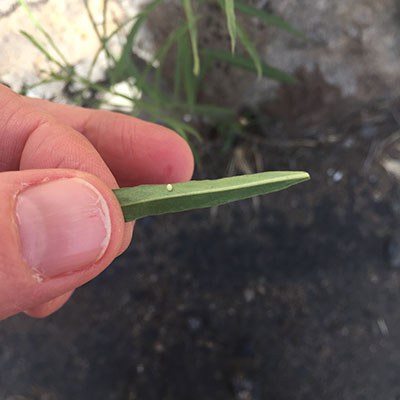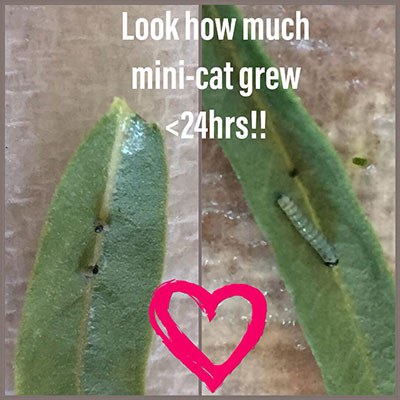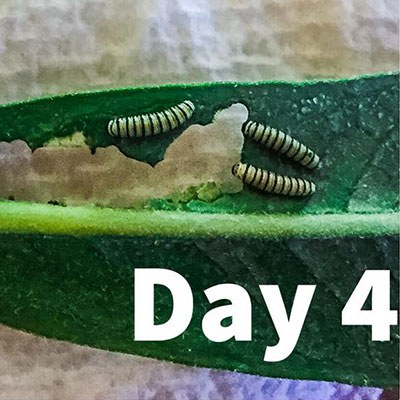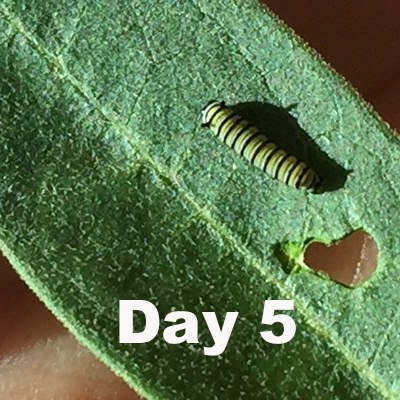Did you know that Central Oregon is part of the monarch butterfly's native breeding ground? If you've never seen one of these beautiful butterflies in Central Oregon, it's not a surprise. Pressure from development, climate change, and the loss of milkweed (monarchs' only host plant) have caused a significant decline in their population.
But there is good news! Some butterflies do still pass through the area on their migration north and are laying eggs on native milkweed. Because less than 10% of monarch eggs survive to adulthood, the folks at Deschutes National Forest and Monarch Advocates of Central Oregon are increasing their chance of survival by rearing a limited number of the caterpillars indoors, then tagging and releasing the butterflies back outside.
We helped collect some eggs and are rearing them in our office. Hopefully this will give them a better chance of survival! Take a look at how quickly these little caterpillars grow!
|
|
Tiny, tiny caterpillars emerge! |
|
|
|
|
Hungry caterpillars keep growing. |
Mini cat has antennae! |
These little caterpillars will continue to grow for about 10 more days (15 days in total) until they are 1-2 inches long! Then the caterpillar will form a chrysalis and after 10 days will emerge as a butterfly!
We have already planted native milkweed and other plants important to pollinators at Whychus Canyon Preserve and have plans to plant 100 more native milkweed plants at Camp Polk Meadow Preserve this fall. Hopefully, we can help these incredible insects survive in this changing world.
Please do not attempt to rear monarchs on your own. If you are interested in how you can help monarch butterflies please contact Monarch Advocates of Central Oregon or Southern Oregon Monarch Advocates.
Learn more:
- The Magic of Milkweed
- Monarchs and Milkweed
- Tips for an Excellent Butterfly Expedition
- Monarch Advocates of Central Oregon
- Southern Oregon Monarch Advocates



 Such a tiny egg on milkweed.
Such a tiny egg on milkweed.

